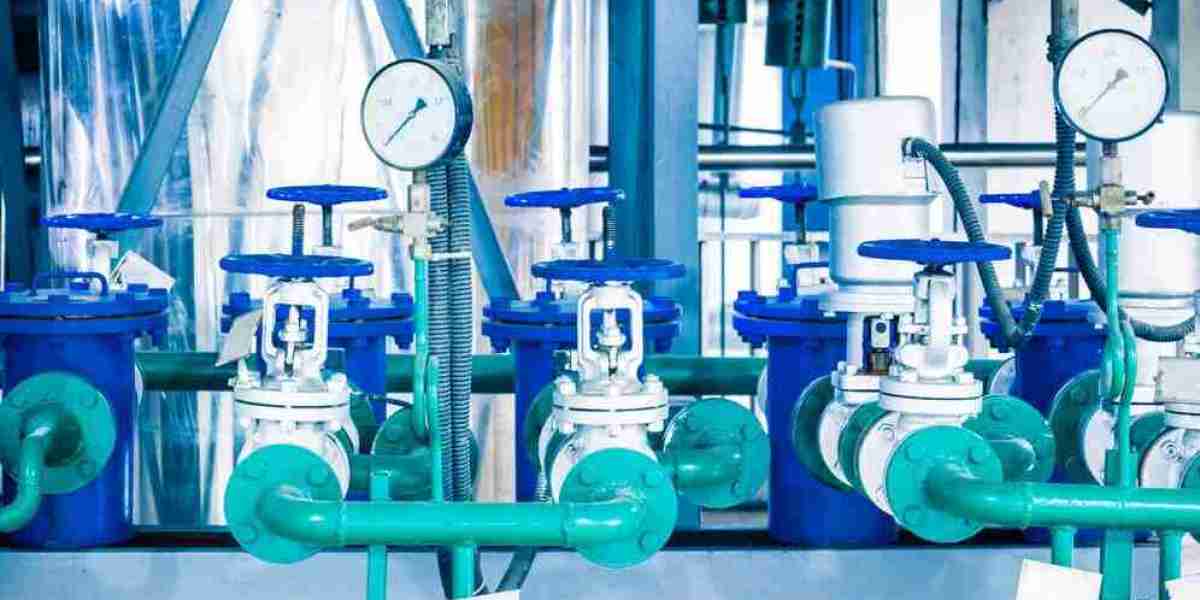The Ultrasonic Flowmeters Market has experienced rapid growth, driven by technological advancements and the increasing demand for accurate, non-invasive flow measurement solutions across various industries. However, like any emerging technology, the market faces several restraints that could potentially impact its expansion. These challenges include high initial costs, technical limitations, competition from traditional flow measurement technologies, and the need for highly skilled operators. This article explores the primary restraints in the ultrasonic flowmeter market, providing insights into the challenges that companies and industries must navigate.
1. High Initial Cost of Installation
One of the primary restraints in the ultrasonic flowmeter market is the high initial cost of these devices. Ultrasonic flowmeters, particularly clamp-on models and multi-path ultrasonic meters, can be more expensive compared to traditional flow measurement technologies such as turbine or positive displacement meters. While these flowmeters offer significant benefits, such as non-invasive installation and high accuracy, the upfront investment can be prohibitive for small and medium-sized enterprises (SMEs).
For industries with tight budgets or those operating in developing markets, the cost of ultrasonic flowmeters may discourage adoption. Despite the potential for long-term cost savings due to reduced maintenance needs and increased energy efficiency, the high initial investment can be a major barrier to entry. This could limit the widespread adoption of ultrasonic flowmeters, particularly in smaller operations or industries with low margins.
2. Technical Limitations in Certain Applications
Although ultrasonic flowmeters are known for their accuracy, they do have certain technical limitations that can restrict their use in specific applications. For instance, ultrasonic flowmeters may struggle to provide accurate measurements in applications with very low or very high flow rates. In systems where the flow velocity is too low, the sound waves may not be able to accurately capture the flow characteristics, leading to unreliable data. Similarly, ultrasonic meters may face challenges in measuring high-velocity flows, where the turbulence can affect the accuracy of readings.
Ultrasonic flowmeters also rely on the fluid's acoustic properties, such as its density and viscosity. In situations where the fluid's properties are highly variable or where there is a mixture of gases and liquids, ultrasonic flowmeters may struggle to provide accurate readings. This limits their applicability in certain industries like heavy chemical processing, where fluids are often complex or multi-phase.
3. Competition from Traditional Flow Measurement Technologies
While ultrasonic flowmeters offer numerous advantages, they are still facing strong competition from traditional flow measurement technologies such as turbine flowmeters, positive displacement meters, and magnetic flowmeters. These technologies are well-established in various industries and continue to dominate certain applications due to their lower costs and well-understood performance characteristics.
Turbine and positive displacement flowmeters are often less expensive and more widely used in industries like water treatment, oil and gas, and food and beverage. For certain applications, these technologies may also offer a simpler installation process or more straightforward maintenance requirements compared to ultrasonic meters. As a result, companies in industries that have already invested in traditional flow measurement solutions may be hesitant to switch to ultrasonic technology, especially when the cost of transition is high.
4. Need for Skilled Operators and Calibration
Another restraint in the ultrasonic flowmeter market is the need for skilled operators and the complexity of calibration. Ultrasonic flowmeters, especially the more advanced models with multi-path measurement or digital signal processing (DSP) capabilities, require specialized knowledge to install, operate, and maintain properly. The calibration process, which ensures accurate readings, can be complex and requires trained personnel to perform the task effectively.
In industries with a shortage of qualified engineers or operators, the need for specialized training can be a significant obstacle. The reliance on skilled operators also leads to increased operational costs and potential downtime if the personnel are not adequately trained or if there is a lack of expertise in using these devices. In some regions or sectors, companies may be reluctant to adopt ultrasonic flowmeters due to the additional resource requirements.
5. Environmental Conditions and Installation Challenges
Ultrasonic flowmeters rely on the transmission of sound waves to measure flow, which can be influenced by environmental conditions. Extreme temperatures, pressure variations, and aggressive chemicals in certain applications can affect the accuracy and reliability of ultrasonic flowmeters. In such cases, special materials or coatings may be needed to ensure the flowmeter functions properly, adding to the installation cost and complexity.
Additionally, while clamp-on ultrasonic flowmeters offer a non-invasive installation process, they still require accurate alignment on pipes and careful calibration to function optimally. In environments with complex pipe networks or where access is difficult, installing ultrasonic flowmeters can be a challenging and time-consuming task, which might discourage potential users.
6. Limited Awareness in Developing Markets
While the ultrasonic flowmeter market is expanding globally, there is still a significant awareness gap in some developing regions. In many emerging markets, industries may not fully understand the benefits or applications of ultrasonic flowmeters, and companies may continue to rely on outdated or less accurate flow measurement technologies. Lack of awareness about the advantages of ultrasonic flowmeters, such as their accuracy, non-invasiveness, and reduced maintenance needs, may hinder adoption in these regions.
Furthermore, developing markets may face infrastructure challenges, such as insufficient support for advanced technologies or limited access to qualified technicians who can handle the installation and maintenance of ultrasonic flowmeters.
7. Conclusion
While the ultrasonic flowmeter market offers significant growth potential, several restraints must be addressed for wider adoption. These challenges, including high initial costs, technical limitations, competition from traditional flow measurement technologies, and the need for skilled operators, present obstacles for industries seeking to implement ultrasonic flowmeters. However, as technology continues to evolve and costs decrease, ultrasonic flowmeters are likely to become more accessible, addressing many of these constraints. Continued innovation, along with growing awareness in emerging markets, will likely help overcome these barriers, leading to broader adoption and further market development in the coming years.




